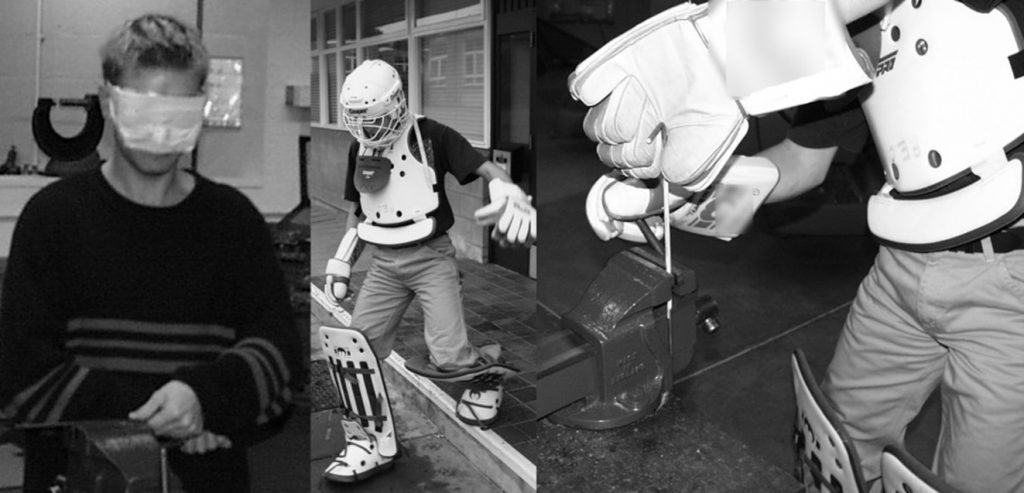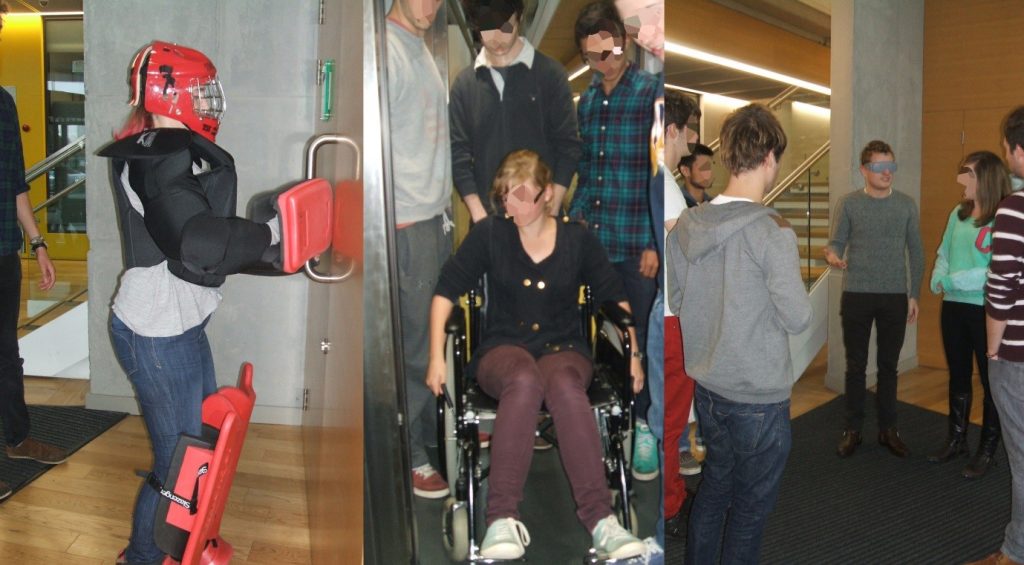For those unfamiliar with the AT market, the use of empathic modelling can provide insights into the issues faced by those with specific impairments, such as arthritis, partial sight or blindness. This form of modelling also helps a designer or new product development (NPD) team ask the right questions of target or end users.
Once focused on a target market and the relating socio-economic background identified, it will be possible to define the associated lifestyle and user characteristics of people within the target market. Gaining an affinity with the emotional needs and aspirations of a target user is then possible from the defined age, gender and lifestyle. Methods by which a designer or team may gain empathy with some of the constraints upon activities of daily living are:
- Predictive modelling;
- Empathic modelling (replicating the physical elements of a medical condition);
- Mixed methods research;
- Product/cultural probes; and,
- Product champion.
Wearing Hockey kit; American football or other all-body protectors; two or three layers of heavy jackets and trousers; thick leather or thick PVC coated work/builders gloves; and ear protectors can replicate certain physical characteristics:
- The bulk and weight replicates obesity and limited mobility, arthritis and poor balance;
- Stiff, bulky gloves replicate arthritis or limited dexterity/grip strength/ Multiple Sclerosis;
- A helmet, frosted glasses or those with just a pinhole replicates some eye conditions, glaucoma, limits head movement; and,
- A helmet or ear protectors restricts hearing and sound location.
Although simulation of impairments can be replicated by improvisation, there are simulations suits available such as the Second-skin system (Cook et al 2012)
Useful links
Cook.S., Gibb., A.G.F., Richardson, J.H., Walmsley, K., Bullock, D. 2012. Loughborough University SKInS: wearable simulations of occupational health – defining specifications and product development. Available at: (https://dspace.lboro.ac.uk/dspace-jspui/handle/2134/11835), Accessed: [2/09/2015]
Poulson, D., M. Ashby, S.Richardson, and TIDE User Consortium. 1996. Userfit : A practical handbook on user-centred design for assistive technology. Brussels: ECSC-EC-EAEC.
Torrens, G.E., Universal Design: empathy and affinity, Chapter, In. Handbook of Human Factors and Ergonomics in Consumer Products, (Ed), Soares, M., (2011), Taylor & Francis: London. Available at: (https://www.researchgate.net/publication/330306688_Universal_design_Empathy_and_affinity), Accessed: [23/01/2021]
Engineering Design Centre, 2010. Inclusive Tool Kit, 2010: Cambridge: EDC
Torrens, G. 2000, Understanding the product user: The implementation of a user-centred design approach by student industrial designers when designing for elderly and disabled people, The Design Journal, 3, (1), Bloomsbury: London. pp15-330 Available at: (https://hdl.handle.net/2134/15753), Accessed: [23/01/2021]


